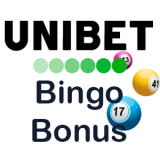Safe Strategies for Managing Betting Bankrolls
Set a clear budget for your betting activities. Determine the amount you're willing to allocate for a specific period, whether it's weekly or monthly. This budget should be an amount you can afford to lose without affecting your financial stability. Adhering to this budget is non-negotiable; it establishes a foundation for responsible gambling.
Introduce a staking plan based on your bankroll size. A common strategy is to wager a fixed percentage of your total bankroll on each bet. For example, betting 1-2% of your bankroll per wager minimizes the risk and helps maintain longevity in your betting activities. Adjust your stakes as your bankroll changes; increasing your bet size during winning streaks while decreasing it during losses preserves your funds.
Track your bets meticulously. Maintain a detailed record that includes bet type, odds, stake, and outcome. This practice not only provides insights into your betting patterns but also allows you to evaluate what works best for you over time. Analyzing this data regularly enables you to make informed adjustments to your strategy.
Consider implementing a loss limit. Decide in advance how much you're willing to lose in a single session, and stick to it. This technique prevents emotional betting, reducing the likelihood of chasing losses. It's crucial to exit the betting environment once your loss limit is reached, allowing for a more balanced approach to future sessions.
Finally, adjust your expectations. Acknowledge that betting is not a guaranteed money-making endeavor. Focus on long-term profits rather than immediate outcomes. Accepting the nature of variance in betting results fosters a healthier mindset and often leads to more rational decision-making.
Setting a Realistic Budget for Your Betting Activities
Establish a clear budget before placing any bets. Determine how much you can afford to lose without impacting your financial stability. A good rule of thumb is to allocate 1-5% of your overall bankroll for each wager. This limits exposure and helps maintain a level-headed approach during high-stakes moments.
Monitor your wins and losses closely. Keeping accurate records of your betting outcomes will allow you to assess how your budget holds up over time. Adjust your budget periodically based on your performance; if you find yourself consistently winning, you might raise your stakes slightly while lowering them if losses occur frequently.
Factor in your betting frequency and the types of bets you place. If you prefer high-risk wagering, maintain a smaller portion of your bankroll for each bet. For more conservative strategies, allocate a larger proportion of your budget. Always choose a strategy that aligns with your risk tolerance and financial goals.
Establish a timeframe for your betting activities. Setting a weekly or monthly budget can help you track your spending habits effectively. If you reach your predetermined limit, take a break from betting to reevaluate your approach.
Stay disciplined. Resist the urge to chase losses or exceed your budget, as this often leads to poor decision-making. A firm budget encourages strategic betting and minimizes impulsive actions.
Review and adjust your budget regularly. Changes in your financial situation or betting habits may necessitate a reevaluation. Staying proactive ensures your budget remains realistic and sustainable in the long run.
Determining the Optimal Bet Size for Your Bankroll
Set your bet size at about 1% to 3% of your total bankroll. This percentage strikes a balance between managing risk and allowing for growth. For example, if your bankroll is ,000, keep your individual bets between and .
Adjust your bet size based on your confidence level for the specific wager. For lower-risk bets where you have a strong edge, consider increasing your stake up to 5%. Conversely, for bets with greater uncertainty, reduce your bet size to 0.5% or even 1%.
Also, utilize a staking plan to provide structure to your betting approach. A flat betting system maintains consistency across all wagers. Alternatively, a percentage-based plan fluctuates your bet size in line with your bankroll changes, enhancing potential returns during winning streaks.
Regularly monitor your bankroll and revise your betting strategy. As your bankroll increases or decreases, adjust your bet size accordingly. This approach helps mitigate losses and maximizes profits while keeping your betting sustainable.
Lastly, avoid chasing losses by increasing bet sizes as a way to recover. Stick to your pre-established limits to maintain discipline and control over your betting strategy.
Establishing Loss Limits and Win Goals
Set specific loss limits before you start betting. Decide on an amount you can afford to lose without affecting your finances and mental well-being. This could be a fixed percentage of your bankroll or a set dollar amount per session. For instance, if your bankroll is ,000, consider limiting losses to 5% or per session.
Define win goals as well. Establish a target for profit that feels attainable yet motivates you. A common strategy is to aim for a certain percentage of your bankroll, such as 10% per month. If your bankroll is ,000, set a goal of profit within that timeframe.
Write these limits and goals down and review them regularly. This creates accountability and keeps you focused on your objectives. Adjust these limits if necessary, based on your experience and changing circumstances, but do so with caution.
Stick to your limits. If you reach your loss limit, end your session. This prevents chasing losses, which often leads to greater losses. Celebrate when you hit your win goal, but know when to walk away. If you achieve your goal early in the betting session, consider stopping for the day.
Create a plan for monitoring your progress. Track your wins, losses, and adjustments to gain insights into your performance. Use this data to refine your limits and goals continually.
Lastly, maintain a balanced approach to betting. Remember that the thrill of winning should not compromise your financial stability. Establishing clear loss limits and win goals helps manage expectations and promotes responsible betting habits.
Utilizing Betting Units to Monitor Your Progress
Implement a system of betting units to streamline your tracking. Assign a standardized unit value, typically 1% of your bankroll. For instance, if your bankroll is ,000, each unit would equal . This method allows you to evaluate bets in relation to your overall bankroll with ease.
Log each bet as a multiple of your unit. For example, if you place a wager, record it as 3 units. This simplifies comparisons between various bets and their impact on your financial position.
| Unit Value | Bankroll | Bet Amount | Units |
|---|---|---|---|
| ,000 | 3 | ||
| ,000 | 5 | ||
| ,000 | 10 |
Review your results regularly. Keep an updated record of wins and losses by unit. This helps in assessing performance without being swayed by emotional reactions. A clear overview enables adjustments to your strategy based on solid data.
Consider utilizing graphs or charts to visualize your betting history. A simple line graph reflecting your profit and loss in units can illustrate trends effectively. Visual aids often reveal patterns and guide future betting decisions.
Set goal units for specific periods, like monthly milestones. This not only serves as motivation but also provides benchmarks to evaluate your betting effectiveness. Adjust your strategies if you consistently fall short of these goals.
Using betting units facilitates a structured, disciplined approach. This method fosters informed decisions, enabling more efficient bankroll management while enhancing your overall betting experience.
Adjusting Your Bankroll Strategy Based on Performance
Track your betting performance regularly. Analyze win/loss ratios, identify trends, and adjust your strategy accordingly. If you're on a winning streak, consider increasing your stake slightly. A rule of thumb is to increase your bet size by no more than 10% of your total bankroll to manage risk effectively.
If losses accumulate, it’s crucial to reassess your betting strategy. Lower your stakes to 1-2% of your bankroll to avoid significant depletion. This approach helps you stay in the game while recalibrating your strategy based on identified weaknesses.
Utilize a unit betting system. Divide your bankroll into units based on a percentage of your bankroll. For example, if your bankroll is ,000, and you decide on a 2% unit size, each bet should be . This method provides discipline and mitigates emotional betting.
Review performance metrics weekly. Calculate your total profit/loss percentage and adapt your approach. Positive trends may allow for more aggressive betting, while negative trends call for conservative adjustments.
Finally, set clear performance goals. Whether it’s achieving a specific profit percentage or a certain number of successful bets, goals help measure progress and guide your adjustments. Revisit these goals frequently to align with your current performance.
Incorporating Risk Management Techniques in Betting
Set a clear budget before placing any bets. Allocate a specific portion of your bankroll for each session, avoiding the temptation to exceed this limit. This discipline aids in maintaining control over your finances.
Utilize the stake percentage method. Bet a fixed percentage of your total bankroll on each wager, typically between 1% and 5%. This approach minimizes the damage from losses while allowing for growth when successes occur.
Diversify your bets across various sports, leagues, or markets. This strategy reduces the overall risk as it spreads exposure. By engaging in different betting areas, you mitigate the impact of potential losses from any single event.
Implement loss limits for your betting sessions. Decide beforehand the maximum amount you are willing to lose in a day or at a betting event. Stick to this limit to prevent emotional decision-making that could lead to larger losses.
Adjust your betting strategy based on performance. Regularly analyze the results of your bets and refine your approach accordingly. Identify successful patterns or areas needing improvement. Adaptation ensures that you stay in tune with your performance metrics.
Incorporate hedging strategies when necessary. If you have an existing bet, placing another wager on the opposite outcome can minimize potential losses. This technique allows you to secure a portion of your bankroll against unexpected results.
Track your betting history meticulously. Keep records of your bets, including stake amounts, outcomes, and reasoning behind each wager. This data enables you to identify trends and informs better decision-making moving forward.
Finally, manage your emotions effectively. Avoid chasing losses or becoming overly confident after wins. Maintaining a rational mindset keeps your strategies grounded and reduces the likelihood of impulsive decisions that jeopardize your bankroll.






